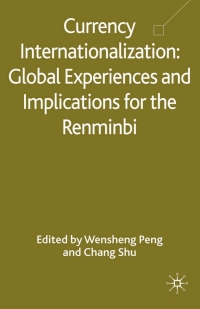Download and save the photos to view them
Download and save the photos to view them
Download and save the photos to view them
Download and save the photos to view them


Sales Accounts Consolidation subsequent to date of acquisition-Equity method with noncontrolling interest, AAP, and gain on upstream intercompany equipment sale A parent company acquired its 75% interest in its subsidiary on January 1, 2008. On the acquisition date, the total fair value of the controlling interest and the noncontrolling interest was $560,000 in excess of the book value of the subsidiary's Stockholders' Equity. All of that excess was allocated to a Royalty Agreement, which had a zero book value in the subsidiary's financial statements (i.e., there is no Goodwill). The Royalty Agreement has a 7 year estimated remaining economic life on the acquisition date. Both companies use straight line depreciation and amortization, with no salvage value. In January 2011, the subsidiary sold Equipment to the parent for a cash price of $240,000. The subsidiary acquired the equipment at a cost of $480000 and depreciated the equipment over its 10-year useful life using the straight-line method (no salvage value). The subsidiary had depreciated the equipment for 6 years at the time of sale. The parent retained the depreciation policy of the subsidiary and depreciated the equipment over its remaining 4 year useful life. Following are financial statements of the parent and its subsidiary for the year ended December 31, 2013. The parent uses the equity method to account for its Equity Investment. Parent Subsidiary Parent Subsidiary Income statement: Balance sheet: $3,380,000 $876,000 Assets Cost of goods sold (2,424,225) (525,600) Cash $684,595 $243,272 Gross profit 955,775 350,400 receivable 591,500 376,680 Income (loss) from subsidiary 40,980 Inventory 878,800 481,800 Operating expenses (507,000) (227,760) PPE, net 3,400,280 902,280 Net Equity income $489,755 122,640 investment 460,968 $6,016,143 $2,004,032 Statement of retained earnings: Liabilities BOY and retained stockholders earnings $1,812,627 $197,100 equity Net Accounts income 489,755 122,640 payable $341,380 $155,928 Other current Dividends (98,408) (17,520) liabilities 402,220 201,480 EOY retained Long-term earnings $2,203,974 $302,220 liabilities 1,500,000 1,100,000 Common stock 186,914 108,624 APIC 1,381,655 135,780 Retained earnings 2,203,974 302,220 $6,016,143 $2,004,032 Unamortized 1/1/2014 a. Disaggregate and document the activity for the 100% Acquisition Accounting Premium (AAP), the controlling interest AAP and the noncontrolling interest AAP. Do not use negative signs with any of your answers in part a. Unamortized Unamortized Unamortized Unamortized Unamortized Unamortized 2008 AAP 2009 2010 2011 AAP 2012 AAP 2013 1/1/2008 Amortization 1/1/2009 Amortization 1/1/2010 Amortization 1/1/2011 Amortization 1/1/2012 Amortization 1/1/2013 Amortization Royalty agreement 0 0 0 0 0 0 0 0 0 0 0 Controlling interest: Royalty agreement 0 0 0 0 0 0 0 0 0 0 Noncontrolling interest: Royalty agreement 0 0 0 0 0 0 0 0 0 0 0 0 0 0 0 0 0 0 0 b. Calculate and organize the profits and losses on intercompany transactions and balances. Use a negative signs with answers that are reductions. Downstream Upstream 0 0 Less: . 0 0 0 0 C. Compute the pre-consolidation Equity Investment account beginning and ending balances starting with the stockholders' equity of the subsidiary. Use negative signs with answers that are deductions, 0 Equity investment at 1/1/13: Common stock APIC Retained earnings 0 0 0 Less: 0 0 Equity investment at 12/31/13: Common stock 0 0 APIC Retained earnings 0 0 Less: 0 0








